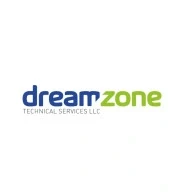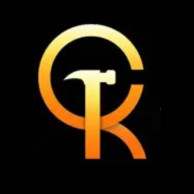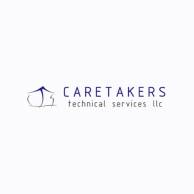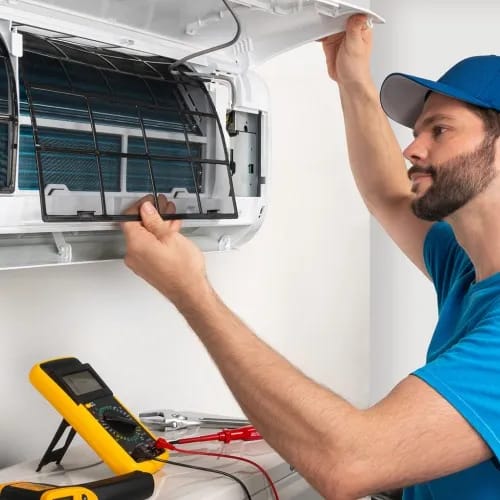Top 10 Fan Motors Suppliers in Dubai
Fan motors are essential components used in a variety of cooling systems, from residential and commercial air conditioners to large-scale industrial machines. These motors drive the blades of fans, ensuring the effective circulation of air for cooling or ventilation purposes. In a city like Dubai, where temperature extremes are common, the demand for fan motors is critical to maintaining comfort and functionality across various sectors.
Fan motor suppliers provide a range of fan motors used for different applications, including HVAC systems, industrial machinery, home appliances, and large commercial cooling systems. These suppliers source fan motors from trusted manufacturers and ensure the availability of these products in various specifications, including motor type (AC, DC), power, speed, and size. Their role also includes offering technical support, ensuring timely deliveries, and assisting customers with the selection of motors based on specific needs. In Dubai, fan motor suppliers cater to a broad range of industries, including construction, manufacturing, and retail. Due to the city's high demand for cooling solutions, these suppliers play an essential role in ensuring a steady supply of fan motors, both for new installations and replacement needs.
· Mujahid Ali Ghulam Technical Services
Prime Business Center, Jumeirah Village Circle, Near Luxe Signature Holiday Homes LLC, Jumeirah Village, Dubai, 21537
· Binafix Technical Services LLC
F 74, Ahmed Building, 26th, Near Muraqqabat Police Station, Hor Al Anz, Dubai
· Ryan Technical Services
Al Khail Mall, Al Quoz, Near To NMC Amala Medical Centre, Al Quoz 4, Dubai
· KVC Technical Services Co LLC
Office 0438, Hamsah - A Building, 3 A Street, Near To Ansar Gallery Building, Al Karama, Dubai
· Ulti Trend Technologies
Office 505, Capital Golden Tower, Rich Rose In Same Building, Business Bay, Dubai, 450535
· Jashim Anjom Technical Services
Office No 2002, Al Qusais 2, Business Tower, Al Qusais, Dubai, 54545
· Mainstream Technical Services LLC
Obaid Mehayer Obaid Bin Suroor Warehouses, Dubai Investment Park 2, Behind Pepsi, Dubai Investment Park 2, Dubai
· Al Batal Al Saed Interior Decoration LLC
101, Shakhboot Building, Damascus Street, Opposite Emirates Building, Al Qusais Industrial Area 1, Dubai
· Ahmed Amin Technical Services
Shop No:6, Al Giryani Building, Al Nakheel, Near Fonax Hotel, Deira, Dubai
· Creative Space Interiors
Office 302, Al Raffa Building, Opposite New Grand Shopping Mall, Al Mankhool Road, Dubai
Fan Motors Suppliers: Complete Guide in Dubai
Fan motors are an essential component of various types of fans, including ceiling fans, exhaust fans, industrial blowers, and ventilation systems. Fan motors suppliers offer a wide variety of motors to meet the diverse needs of residential, commercial, and industrial applications. This guide provides detailed information about fan motor suppliers and addresses common questions to help you choose the right supplier for your fan motor requirements.
Fan motors suppliers are businesses that specialize in providing motors for different types of fans. They cater to industries such as HVAC, manufacturing, home appliances, and agriculture. These suppliers offer a wide range of fan motors, including high-efficiency motors, custom-built motors, and motors with different power ratings, speed options, and voltage levels. Many fan motor suppliers also provide consultation services, installation support, and after-sales services to ensure that their customers get the best motor solutions.
Types of Fan Motors Available in Dubai
Fan
motors are used in various applications to power fans, which help circulate air
for cooling, ventilation, and heating. There are different types of fan motors
designed to meet specific requirements, including the size, speed, and type of
fan. Below are the main types of fan motors available:
1. AC (Alternating Current) Fan Motors
- Design: These motors are powered
by alternating current (AC), which means the direction of current
alternates periodically.
- Operation: AC fan motors work by
using an electromagnet to produce rotational motion when current passes
through the windings.
- Applications: Common in home appliances,
HVAC systems, and industrial ventilation systems.
- Types:
- Shaded Pole Motor: Low-cost, simple design,
typically used in small fans.
- Split-phase Motor: Used in medium-size fans
for residential or commercial applications.
- Capacitor Start Motors: Used for fans requiring
high torque to start, such as larger HVAC fans.
- Permanent Split Capacitor
(PSC) Motors:
Energy-efficient, commonly used in continuous duty fans like ceiling fans
or air circulators.
2. DC (Direct Current) Fan Motors
- Design: DC motors operate on
direct current (DC) supplied by batteries, power supplies, or rectifiers.
- Operation: These motors use brushes
and a commutator to reverse the current direction within the motor,
allowing it to rotate.
- Applications: Typically used in applications
requiring precise speed control or low power consumption, like computer
cooling fans, small exhaust fans, or portable fans.
- Types:
- Brushed DC Motors: Simple and inexpensive,
used for low-power fans and small appliances.
- Brushless DC Motors (BLDC): More efficient, quieter,
and require less maintenance. Common in high-performance fans such as
those in computers or high-efficiency HVAC systems.
3. EC (Electronically Commutated) Fan Motors
- Design: EC motors are a type of
brushless DC motor that includes an integrated electronic circuit to
regulate speed and provide better control.
- Operation: EC motors are designed to
operate at high efficiency with a built-in electronic controller that
provides variable speed control.
- Applications: Used in energy-efficient
systems such as ventilation fans, HVAC systems, industrial fans, and air
handling units.
- Features: Extremely
energy-efficient, low maintenance, and capable of variable-speed control.
4. Universal Fan Motors
- Design: These motors are capable
of operating on both AC and DC power supplies.
- Operation: Universal motors are
similar in design to series-wound DC motors, but they can also run on AC
power, making them versatile for various fan applications.
- Applications: Common in vacuum cleaners,
portable fans, and small appliances like hairdryers.
- Features: Compact, lightweight, and
cost-effective, but typically noisy and less energy-efficient than other
types.
5. Squirrel Cage Induction Motors
- Design: A type of AC motor widely
used in industrial applications, where a rotating magnetic field is
generated to induce current in the rotor, which drives the fan.
- Operation: These motors have a rotor
made of laminated iron, and the design is highly reliable for long-lasting
operation.
- Applications: Used in large industrial
fans, blowers, and HVAC systems where high power is required.
- Features: High torque output and
robust construction.
6. Three-Phase Fan Motors
- Design: These motors operate on
three-phase AC power, using three separate currents to create a rotating
magnetic field for operation.
- Operation: Three-phase motors are
generally more efficient, have higher power output, and provide better
speed regulation.
- Applications: Used in larger, industrial
applications like ventilation systems, air conditioning units, and air
handlers.
- Features: More reliable, less noisy,
and more energy-efficient compared to single-phase motors.
7. Single-Phase Fan Motors
- Design: These motors operate on
single-phase AC power, using a single alternating current to produce
rotational motion.
- Operation: These motors are typically
less efficient and have lower power output compared to three-phase motors
but are more commonly found in residential and light commercial
applications.
- Applications: Common in household
appliances, such as ceiling fans, exhaust fans, and small HVAC systems.
- Types:
- Split-phase motors: Used in low- to
medium-power applications.
- Capacitor-start motors: Provide higher starting
torque, suitable for larger single-phase applications.
8. Stepper Fan Motors
- Design: Stepper motors are a type
of DC motor that moves in discrete steps to achieve precise positioning or
speed control.
- Operation: These motors move in fixed
increments (or steps) and are often used where precise control of movement
or position is required.
- Applications: Used in applications where
fan speed or position must be finely controlled, such as in precision
instruments or some cooling systems for electronic devices.
- Features: Provide very precise control
over rotation, suitable for specialized equipment.
9. Gear Fan Motors
- Design: Gear motors combine a fan
motor with a gear mechanism to reduce the speed of the motor output.
- Operation: These motors use gears to
reduce the speed of the motor while maintaining high torque.
- Applications: Used where slow,
high-torque movement is required, such as in certain industrial or
large-scale ventilation systems.
- Features: Provides higher torque at
lower speeds, making them ideal for specific industrial applications.
10. Vane Axial Fan Motors
- Design: These motors are used in
axial fan systems, where air flows parallel to the axis of rotation.
- Operation: Vane axial fans use blades
to move air, and the motor drives the blades directly to create airflow.
- Applications: Used in HVAC systems,
large ventilation fans, and other applications that require moving large
volumes of air.
- Features: Typically used for cooling
and exhaust purposes, offering good airflow and efficiency.
11. Centrifugal Fan Motors
- Design: In these motors, the fan's
blades move air at right angles to the direction of the motor's rotation
(centrifugal force).
- Operation: Air is drawn into the fan
and then expelled through a housing, creating high-pressure airflow.
- Applications: Used in HVAC systems, air
conditioning units, and large ventilation systems.
- Features: Typically more efficient
for high-pressure, low-flow applications.
12. ECM (Electronically Commutated Motor) Fan
Motors
- Design: These are high-efficiency
motors with integrated electronics that provide variable speed control and
lower energy consumption.
- Operation: ECM motors adjust their
speed based on load conditions, optimizing efficiency and performance.
- Applications: Used in air handling
systems, ventilation fans, and heating/cooling systems.
- Features: Energy-efficient, provide
quieter operation, and can be controlled remotely for greater flexibility.
Applications of Fan Motors in Dubai
Fan motors
are used in a wide variety of applications across residential, commercial, and
industrial sectors. These motors power fans that help circulate air, providing
ventilation, cooling, and heating. Below are the key applications of fan
motors:
1. HVAC Systems (Heating, Ventilation, and Air
Conditioning)
- Description: Fan motors are integral
components in HVAC systems, where they are used to circulate air for
heating or cooling purposes.
- Applications:
- Air Handlers: Fan motors drive the
blowers that circulate conditioned air through ducts in homes and
buildings.
- Exhaust Fans: Used to expel hot air or
moisture from bathrooms, kitchens, and industrial spaces.
- Ceiling Fans: Help in maintaining
airflow to keep rooms cooler in hot climates or to circulate warm air during
colder months.
2. Industrial Ventilation
- Description: Industrial facilities
require efficient ventilation systems to control temperature, humidity,
and air quality.
- Applications:
- Industrial Exhaust Fans: Used for removing
pollutants, dust, fumes, or gases from manufacturing or processing
plants.
- Cooling Towers: Fan motors are used in
cooling towers to remove heat from water or air in industrial plants.
- Material Handling: Fans are used in
conveying systems to maintain airflow and reduce dust accumulation in
industrial plants.
3. Commercial Ventilation
- Description: Fan motors help in
maintaining air quality and temperature control in commercial buildings
such as offices, shopping malls, and restaurants.
- Applications:
- Air Conditioning Units: Fan motors circulate
refrigerant or air within the system to cool or heat the air inside
commercial buildings.
- Restaurant Exhaust Systems: Fan motors are used to
extract smoke, heat, and odors from kitchens to maintain air quality.
- Ventilation Fans: In large commercial
spaces, fans help maintain a fresh environment by circulating air.
4. Computers and Electronics
- Description: Fan motors are used to
keep computers, servers, and electronic devices cool, preventing
overheating.
- Applications:
- Computer Cooling Fans: Fan motors are used in
desktop PCs, laptops, and gaming consoles to cool internal components
like the CPU and GPU.
- Server Cooling: In data centers, fan
motors are crucial for cooling high-performance servers to ensure they
operate efficiently.
- Power Supply Fans: Used in power supplies to
prevent heat buildup and ensure smooth operation.
5. Home Appliances
- Description: Many household appliances
utilize fan motors to circulate air for cooling or drying purposes.
- Applications:
- Air Purifiers: Fan motors are used to
circulate air through filters to clean the air in homes and offices.
- Dehumidifiers: Fan motors help in
circulating air to remove moisture from the environment.
- Hair Dryers: Fan motors drive the
airflow in hair dryers to blow hot or cold air to dry hair.
- Ovens and Microwaves: Used in convection ovens
to circulate heat for even cooking and in microwaves for air cooling.
6. Cooling Systems
- Description: Fan motors are used in various
cooling systems to regulate temperature in equipment, machinery, and
vehicles.
- Applications:
- Radiator Cooling Fans: Fan motors in vehicles
(cars, trucks, and machinery) circulate air through the radiator to cool
the engine.
- Computer & Server
Cooling:
Used in specialized cooling systems to maintain temperatures in
electronics like servers or high-performance computing devices.
- Refrigeration Systems: Fan motors help circulate
cold air in refrigerators, freezers, and cold storage units.
7. Automotive Applications
- Description: Fan motors are used in
vehicles for cooling purposes and ventilation.
- Applications:
- Engine Cooling: Fan motors circulate air
through the radiator to maintain the engine's temperature.
- Air Conditioning: Fan motors are essential
in automotive HVAC systems to circulate air inside the cabin.
- Interior Ventilation: Fans used to circulate
air inside the vehicle to keep the cabin fresh and dry.
8. Blowers and Air Circulators
- Description: Fan motors are used to
power blowers that move air at high velocities for cooling or drying
purposes.
- Applications:
- Blowers for Drying: Used in industrial or
commercial settings for drying paint, textiles, or other materials.
- High-Velocity Fans: Fan motors are used in
fans that provide high airflow in large spaces or warehouses.
- Industrial Air Movers: Used for moving large
volumes of air in applications like cooling, heating, and ventilation.
9. Refrigeration and Freezing Systems
- Description: Fan motors help in the
circulation of cold air in refrigeration and freezing systems.
- Applications:
- Walk-In Coolers and
Freezers:
Fan motors circulate cold air to maintain uniform temperature within cold
storage units.
- Refrigerator Fans: Used inside refrigerators
to ensure even cooling by circulating air.
- Industrial Cold Storage: Fan motors ensure the
efficiency of industrial refrigeration systems by circulating cold air.
10. Aquarium and Pond Pumps
- Description: Fan motors are used in
water pumps to circulate water for aeration or filtration in aquariums and
ponds.
- Applications:
- Aeration Fans: Used in aquariums to
circulate air for oxygenating the water.
- Water Circulation Fans: Help to maintain water
movement and filter the water in aquariums or artificial ponds.
11. Ventilation in Agricultural Facilities
- Description: Fan motors are used in
agricultural applications to control temperature, humidity, and air
quality in farms or greenhouses.
- Applications:
- Greenhouse Ventilation: Fan motors help in
controlling the climate inside greenhouses by providing fresh air
circulation and humidity control.
- Animal Farms: Used in poultry houses,
barns, and livestock facilities to maintain air quality and temperature.
- Crop Drying: Fans are used in drying
crops by circulating air in drying chambers.
12. Clean Room and Medical Applications
- Description: Fan motors are used in
medical and laboratory environments to maintain air cleanliness and
circulation.
- Applications:
- Clean Rooms: Fan motors circulate air
through HEPA filters to maintain air purity in sterile environments like
hospitals or labs.
- Hospital Ventilation
Systems:
Used to provide fresh air to patient rooms and operating theaters to
reduce infection risks.
13. Air Compressors
- Description: Fan motors are used in air
compressors to move air through the system, providing high-pressure air
for various applications.
- Applications:
- Industrial Air Compressors: Used in manufacturing
facilities for tools and machinery.
- Pneumatic Systems: Fans circulate air in
pneumatic systems that control machinery or tools.
Services Offered by Fan Motors Suppliers
Fan motor suppliers provide several key services to their customers:
·
Product Consultation: Suppliers
offer expert advice on selecting the right motor for specific fan applications,
considering factors like power requirements, speed, and environment.
·
Customization: Some suppliers
offer custom-built fan motors tailored to meet specific needs, such as
high-efficiency motors or motors for harsh environments.
·
Installation Support: Many
suppliers provide installation services to ensure that the motors are correctly
installed and integrated with the fan systems.
·
Maintenance and Repairs:
Suppliers often offer maintenance and repair services to ensure optimal
performance and longevity of fan motors.
·
After-Sales Support: Reliable
suppliers provide after-sales support, including troubleshooting, parts
replacement, and warranty services.
Factors to Consider When Choosing a Fan Motors Supplier
When choosing a fan motors supplier, consider the following factors:
·
Product Range: Ensure the
supplier offers a variety of fan motors to meet your needs, whether it's for
residential fans, industrial blowers, or HVAC systems.
·
Reputation: Check customer
reviews, testimonials, and the supplier’s track record to ensure product
quality and reliable service.
·
Customization Options: If you
have unique requirements, ensure the supplier offers customized solutions for
fan motors.
·
Customer Support: Choose a
supplier that offers strong customer support, including consultation,
installation, and after-sales services.
·
Pricing and Warranty: Compare
prices and check whether the supplier offers warranties on their products to
ensure you get the best value for your investment.
Frequently Asked Questions About Fan Motors Suppliers in Dubai
Q1: What is a fan motor, and how does it work?
A1: A fan motor is an electric motor that powers the blades of a fan to circulate air. It works by converting electrical energy into mechanical energy, causing the fan blades to spin and move air through a space.
Q2: What types of fan motors are commonly used in ceiling fans?
A2: Ceiling fans typically use single-phase AC motors or energy-efficient DC motors. DC motors are often found in modern fans with features like remote control and variable speed settings.
Q3: How do I choose the right fan motor for my application?
A3: The right fan motor depends on the application, power requirements, fan size, and environmental factors. For industrial use, three-phase motors are preferred for their efficiency, while DC motors are ideal for energy-saving residential fans.
Q4: What are the benefits of using a DC fan motor over an AC fan motor?
A4: DC fan motors are more energy-efficient, quieter, and offer better speed control compared to AC motors. They are commonly used in modern fans with advanced features like remote control and adjustable speed.
Q5: Can I replace the motor in my ceiling fan?
A5: Yes, fan motors can be replaced, but it’s important to ensure that the replacement motor matches the specifications of the original motor, such as power rating and size. It’s advisable to seek professional help to ensure proper installation.
Q6: What maintenance do fan motors require?
A6: Fan motors require minimal maintenance. Periodically, the motor and fan blades should be cleaned to remove dust buildup. Lubricating the motor bearings (if applicable) and checking for proper alignment can also extend the motor’s lifespan.
Q7: How long do fan motors last?
A7: The lifespan of a fan motor depends on factors like usage, environment, and motor quality. High-quality fan motors can last 10 to 20 years or more with proper maintenance.
Q8: What is a brushless DC motor, and why is it used in fans?
A8: A brushless DC motor uses electronic controllers instead of brushes to regulate the flow of current, resulting in higher efficiency, reduced noise, and longer motor life. These motors are commonly used in high-end fans and industrial equipment.
Q9: Can fan motors be customized for specific industrial needs?
A9: Yes, many fan motor suppliers offer customization options to meet the unique needs of industries, such as motors with higher power ratings, special coatings for harsh environments, or energy-efficient designs.
Q10: Are there energy-efficient fan motors available?
A10: Yes, DC motors and brushless DC motors are known for their energy efficiency. These motors consume less power while providing the same or better performance than traditional AC motors, making them ideal for energy-conscious consumers.






























